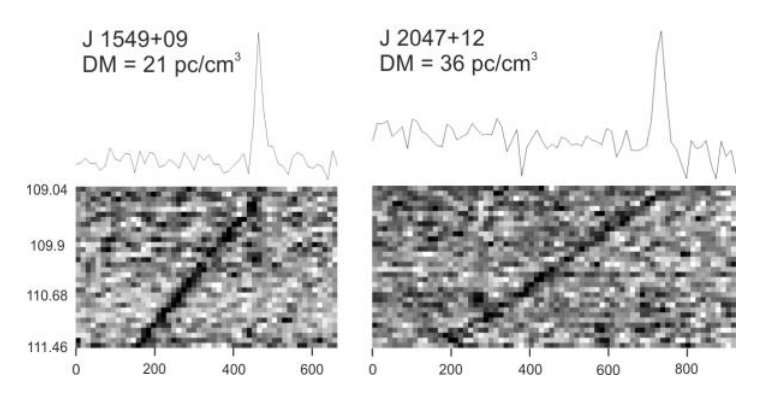July 6, 2022 report
Two new rotating radio transients discovered by astronomers

Using the Pushchino Radio Astronomy Observatory (PRAO), Russian astronomers have carried out a search for rotating radio transients (RRATs). In a recently published paper on the arXiv pre-print server, they report the detection of two new RRATs as part of this observational campaign.
RRATs are a subclass of pulsars characterized by sporadic emission. First objects of this type were identified in 2006 as sporadically appearing dispersed pulses, with frequencies varying from several minutes to several hours. However, the nature of these transients is still unclear. In general, it is assumed that they are ordinary pulsars that experience strong pulses.
So far, only slightly more than 100 RRATs have been found, therefore astronomers are interested in detecting new such transients in order to characterize them and to improve our knowledge about their nature.
Now, a team of astronomers led by PRAO's Sergey Tyul'bashev reports the discovery of two new RRATs—designated J1550+09 and J2047+13. The finding was made with the Large Phased Array at PRAO with a channel width of 78 kHz and a readout time of 12.5 milliseconds. The observations were conducted simultaneously in 96 spatial beams at declinations from -7 to +42 degrees.
"The large effective area of the radio telescope, which is approximately 45,000 m2, provides high fluctuation sensitivity, which makes it possible to search for RRATs," the researchers explained.
Both RRATs were found far beyond the plane of the Milky Way galaxy. The distances were estimated to be about 3,100 and 7,200 light years, for J1550+09 and J2047+13, respectively, hence typical for pulsars. The dispersion measure for J1549+09 and J2047+12, was calculated to be 21 and 35 pc/cm3.
According to the study, J1549+09 was detected four times in the interval of four years, and J2047+12 was detected seven times. For J2047+12, two pulses were detected on one of the days, during a timespan of 2.925 seconds. The pulse half-widths for J1550+09 and J2047+13 were measured to be 18 and 35 milliseconds, respectively.
The astronomers noted that the observation time before the appearance of the pulse from J1550+09 was 20 hours, and for J2047+12—about 11 hours. The researchers concluded that this confirms the existence of RRATs, which have one pulse for 10 or more hours.
"The study shows the existence of rotating transients whose pulses appear less frequently than one pulse per 10 hours of observations.(...) Long series of observations and the use of the programs described above make it possible to detect such rarely flashing rotating radio transients," the authors of the paper wrote.
More information: Detection of two new RRATs at 111 MHz, arXiv:2206.12108 [astro-ph.HE] arxiv.org/abs/2206.12108
© 2022 Science X Network




















